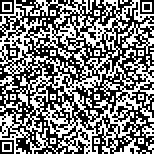| 引用本文: | 张天衍,董增川,罗赟,石晴宜,韩亚雷,崔璨,周强,张游.基于水质-水位二元响应关系推求过水型湖泊适宜生态水位研究.湖泊科学,2022,34(5):1670-1682. DOI:10.18307/2022.0520 |
| Zhang Tianyan,Dong Zengchuan,Luo Yun,Shi Qingyi,Han Yalei,Cui Can,Zhou Qiang,Zhang You.Optimum ecological water level of water-carrying lake based on the relationship between water quality and water level. J. Lake Sci.2022,34(5):1670-1682. DOI:10.18307/2022.0520 |
|
| |
|
|
| 本文已被:浏览 2430次 下载 1834次 |

码上扫一扫! |
|
|
| 基于水质-水位二元响应关系推求过水型湖泊适宜生态水位研究 |
|
张天衍1, 董增川1,2, 罗赟3, 石晴宜1, 韩亚雷1, 崔璨1, 周强4, 张游4
|
|
1.河海大学水文水资源学院, 南京 210098;2.水文水资源与水利工程科学国家重点实验室, 南京 210098;3.黄河水利科学研究院,郑州 450003;4.江苏省水利厅, 水土保持生态环境监测总站, 南京 210029
|
|
| 摘要: |
| 适宜的生态水位能够反映湖区生态系统的多种需求,是湖泊长期稳定健康运转的基本保障. 目前湖泊适宜生态水位的推求大多侧重恢复天然水位情势. 然而过水型湖泊承担着防洪、供水、航运等多种功能,频繁的人类活动导致湖泊水位情势异常复杂. 同时随着社会经济的快速发展,水质恶化对过水型湖泊生态系统造成了较大的负面影响,仅恢复天然水位情势难以反映过水型湖泊的生态需求. 因此,在IHA-RVA法的基础上,本文针对过水型湖泊吞吐性强的特点,利用水质-水位二元响应关系系统地提出了一套逐月修正过水型湖泊适宜生态水位阈值,并确定适宜水位变动率的方法. 以洪泽湖为应用实例,结果表明:1)根据湖泊水文情势和入湖污染物变化情况,湖泊调度周期可以划分为平水期(1—4月)、泄水期(5—6月)、蓄水前期(7—9月)和蓄水后期(10—12月);2)各时期内,洪泽湖水位和水质呈现较强的相关性,其中平水期、泄水期和蓄水后期水质均随着水位上升而下降,平均Pearson系数达-0.77,仅在蓄水前期水质随水位上升而改善;3)现阶段洪泽湖的自净能力和污染物滞留比例竞争关系激烈,逐月适宜生态水位阈值为:12.92~12.99、12.79~12.99、12.84~12.99、12.86~12.99、12.71~12.89、12.39~12.63、11.97~12.93、12.50~13.07、12.65~13.26、12.90~13.04、12.90~13.04、12.90~13.04 m,除蓄水前期外,基于水位水质关系修正的适宜生态水位范围较IHA-RVA法计算的天然水位范围缩小了73.4 %. 总体而言,基于本文方法设计的湖泊适宜生态水位不仅可以满足生态系统对于水体大小的需求,一定程度上也可以体现湖泊生态系统对于水质的要求,为洪泽湖等过水型湖泊的生态调度、水资源管理提供科学依据. |
| 关键词: 适宜生态水位 水位-水质响应关系 过水型湖泊 IHA-RVA法 洪泽湖 |
| DOI:10.18307/2022.0520 |
| 分类号: |
| 基金项目:国家重点研发计划项目(2018YFC1508200)和江苏省水利科技基金重大项目(JSSL-SZY-2019003)联合资助 |
|
| Optimum ecological water level of water-carrying lake based on the relationship between water quality and water level |
|
Zhang Tianyan1, Dong Zengchuan1,2, Luo Yun3, Shi Qingyi1, Han Yalei1, Cui Can1, Zhou Qiang4, Zhang You4
|
|
1.College of Hydrology and Water Resource, Hohai University, Nanjing 210098, P. R. China;2.State Key Laboratory of Hydrology Water Resources and Hydraulic Engineering, Nanjing 210098, P. R. China;3.Yellow River Institute of Hydraulic Research, Zhengzhou 450003, P. R. China;4.Soil and Water Conservation Ecological Environment Monitoring Station, Water Resources Department of Jiangsu Province, Nanjing 210029, P. R. China
|
| Abstract: |
| The optimum ecological water level (OWL) guarantees stable and healthy operation of the lake in the long term by meeting various needs of the lake ecosystem. Previous studies on OWL mainly focused on restoring natural water level regime. However, water-carrying lakes have complicated water lever regimes resulted from flood control, water supply, shipping and other functions. Meanwhile, the water quality was further deteriorated due to rapid economic development. Consequently, the previous methods could not meet all the ecological needs of water-carrying lakes. Basing on IHA (indicators of hydrological alteration)-RVA (range of variability approach) method and relationship between water quality and water level, this paper proposed a method for identifying of the threshold of monthly OWL and determining the OWL variation of water-carrying lake. Taking Lake Hongze as an example, the results indicate that: 1) The lake regulation cycle can be divided into flat period (January-April), discharge period (May-June), early storage period (July-September) and late storage period (October-December) from the angle of hydrological regime and pollution into the lake. 2) There's a strong correlation between water quality and water level in each period as water quality improves with water level rising during the early storage period and deteriorates in other periods (Pearson coefficient was -0.77). 3) Due to the competition between the lake's self-purification capacity and pollutant retention ratio, the monthly OWL threshold from January to December is: 12.92-12.99, 12.79-12.99, 12.84-12.99, 12.86-12.99, 12.71-12.89, 12.39-12.63, 11.97-12.93, 12.50-13.07, 12.65-13.26, 12.90-13.04, 12.90-13.04, 12.90-13.04 m, respectively. The range of OWL modified by the relationship between water level and water quality is reduced by 73.4 % compared with the results of IHA-RVA method except in the early storage period. In general, the OWL designed by methods in this paper can reflect the requirements of lake ecosystem for water quantity and water quality to a certain extent, and provide scientific basis for the ecological regulation and water resource management of Lake Hongze and other water-carrying lakes. |
| Key words: Optimum ecological water level relationship between water level and water quality water-carrying lake IHA-RVA method Lake Hongze |
|
|
|
|